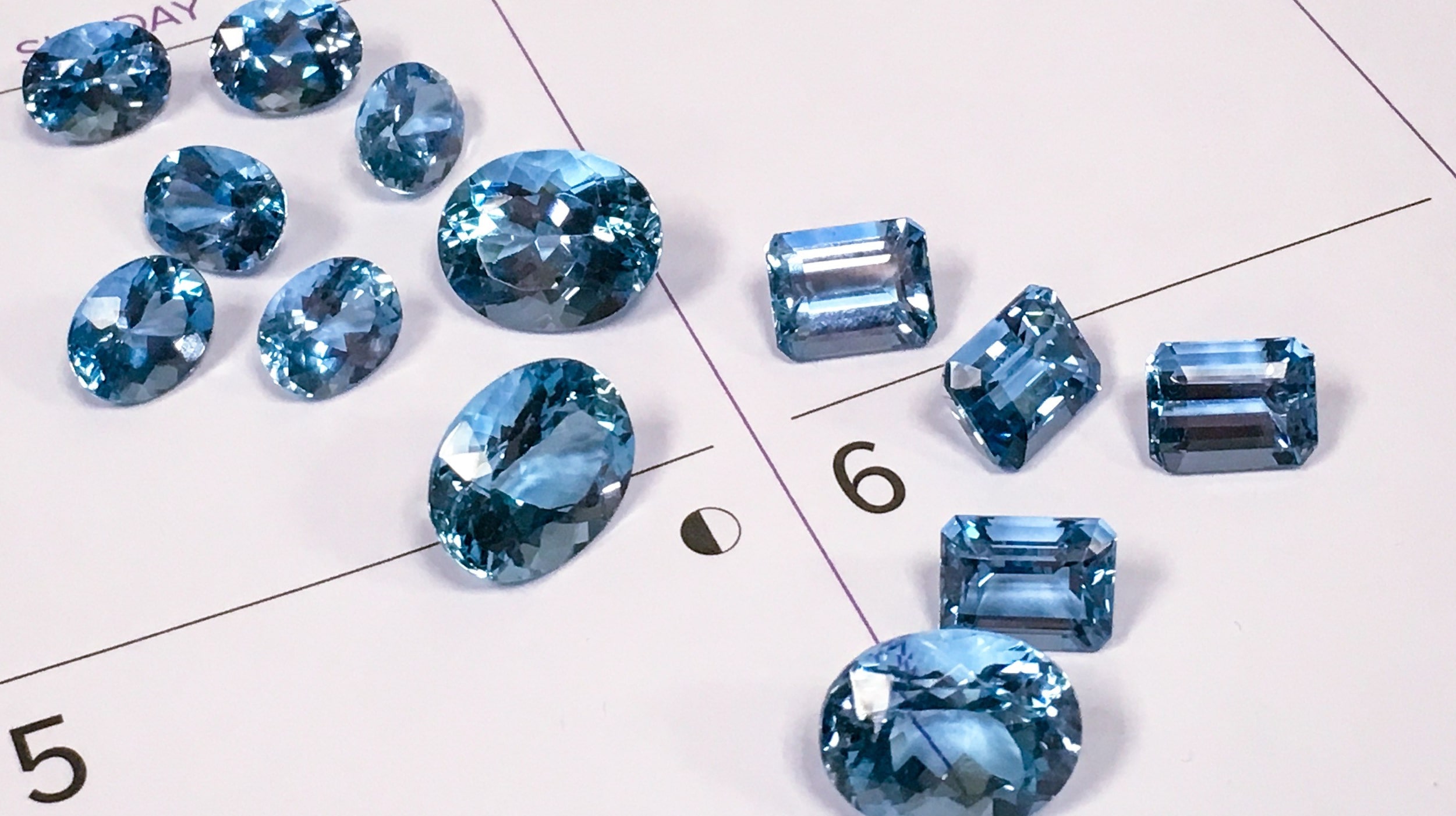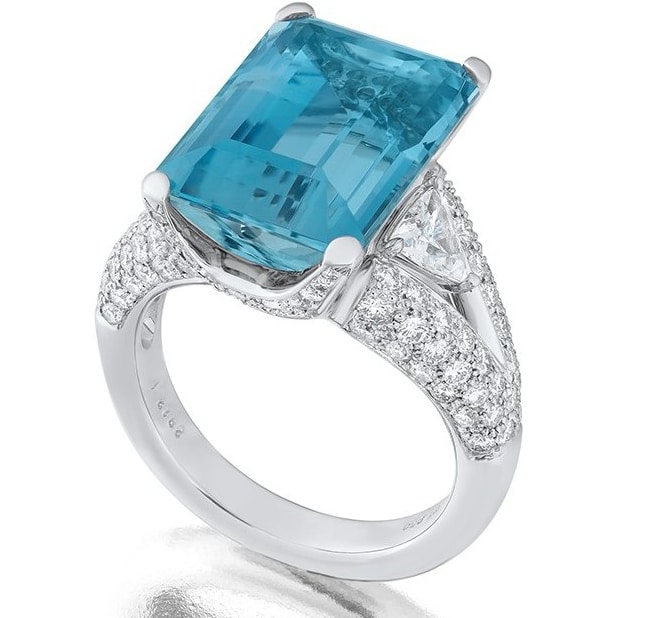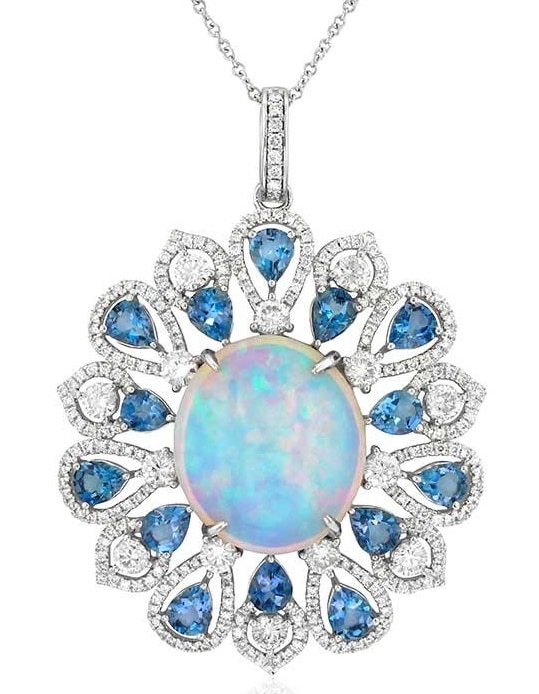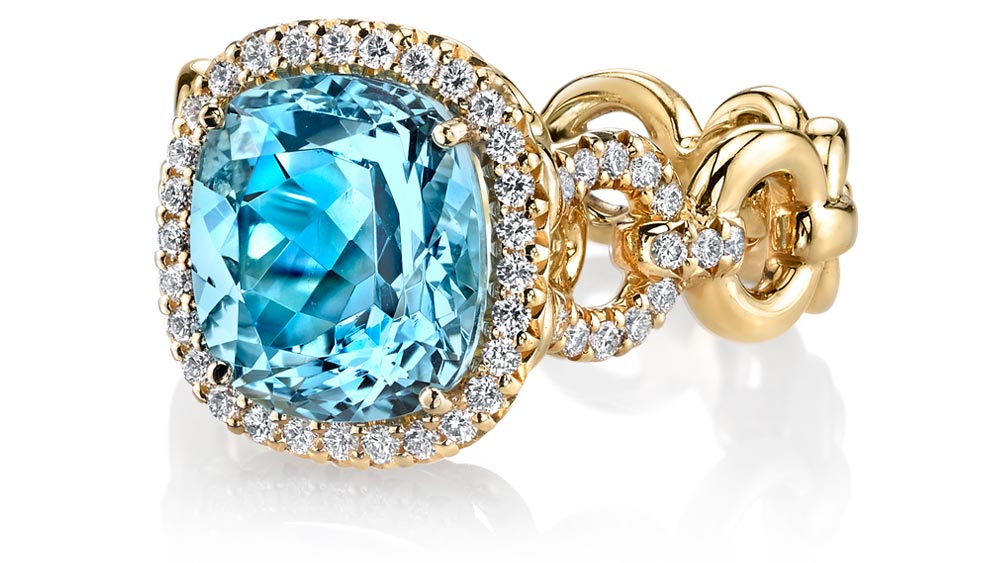Historically speaking, March is an unusual month. It’s a time of transition, from winter blues to the summertime blue of swimming pools. It’s a windy month, too, and the weather can be fickle as one day is cold and the next is warm. It’s supposed to be the first month of spring, but sometimes it feels like the final month of winter.
Even literature has a conflicted relationship with the month. Shakespeare warned Caesar to “Beware the ides of March” in his eponymous play, “Julius Caesar.”
Despite the ups and downs of March, there is one bright, shining and beautiful factor. Aquamarine.
It’s a word which evokes the sea.

Aquamarine is most often light in tone and ranges from greenish blue to blue-green; the color usually is more intense in larger stones, and darker blue stones are very valuable. This gemstone is mined mainly in Brazil but also is found in Nigeria, Madagascar, Zambia, Pakistan, and Mozambique.

Like emeralds, this gemstone is a variety of a mineral called beryl. Large stones have been found all over the world, including one stone found in Brazil that weighed over 240 pounds. Aquamarine grows in large, six-sided crystals that can be up to a foot long, making it a great gem to be cut and polished in larger carats for statement pieces.
Not only is aquamarine one of the March birthstones, it’s also used to celebrate 19th wedding anniversaries. It’s a beautiful stone with little or no yellow in it, so it looks great in many settings with different colored metals and gemstones.

First, visit an AGS jeweler, who will be happy to help you pick out the perfect piece. Next, look at the stone’s cut. Since aquamarine can be very lightly colored (and sometimes appear almost colorless), the cut is very important to the overall appearance of the stone and how saturated, or even, the color appears.
Of course, choose the color that most appeals to you, however, it’s generally accepted that lighter colored aquamarines are less valuable than the stronger, deeper hues of blue or blue-green.

From Erica Courtney Jewelry
Next, take a look at the stone’s clarity. Most cut gems do not have inclusions that are visible to the eye, and some rarer or more expensive aquamarines are available without visible inclusions, as well.
Since aquamarine crystals can grow to be quite large, larger cut gemstones are possible to purchase as a part of beautiful statement pieces. While you may not be looking to buy in that range, even smaller aquamarines make for lovely solitaires or companion jewels in larger pieces.
Ready to see aquamarine up-close and in person? Find an AGS Jewler here. Just don’t forget to bring your jacket. . . or not. It’s March, after all. Who knows what the weather will be like?